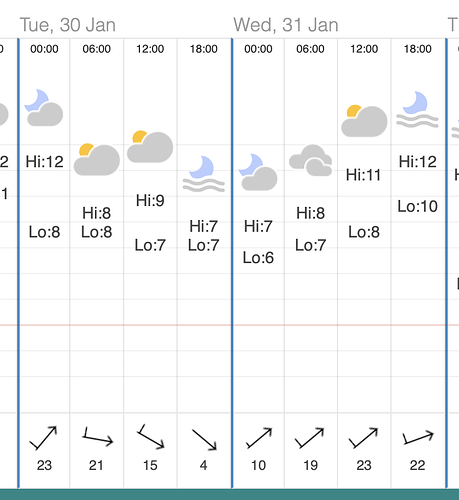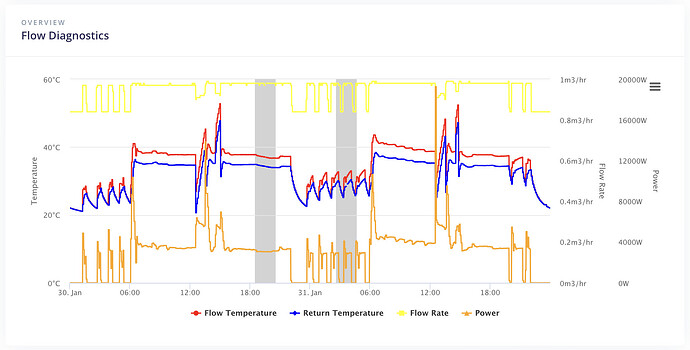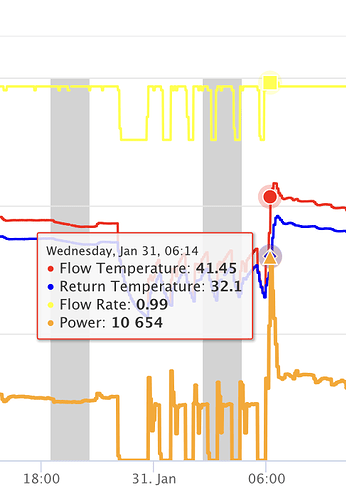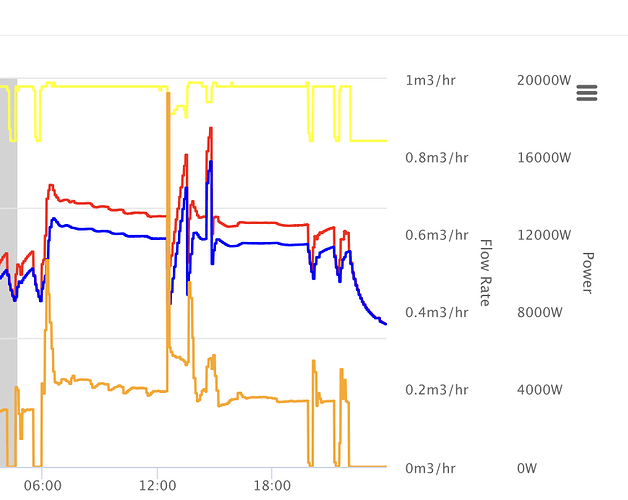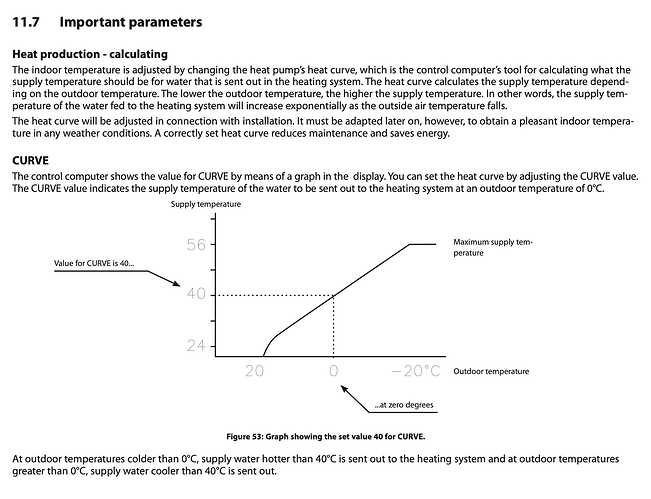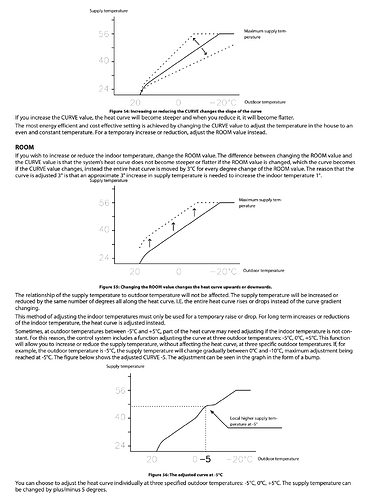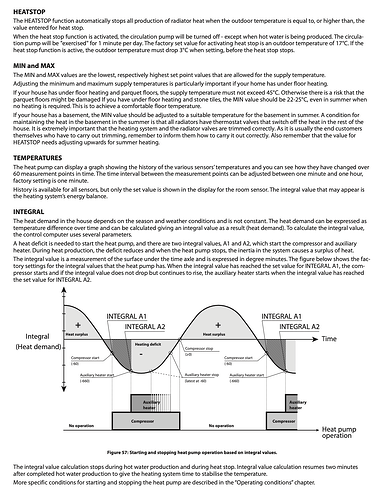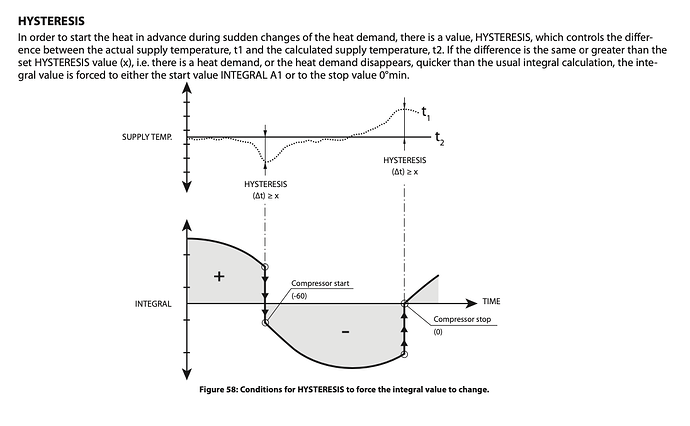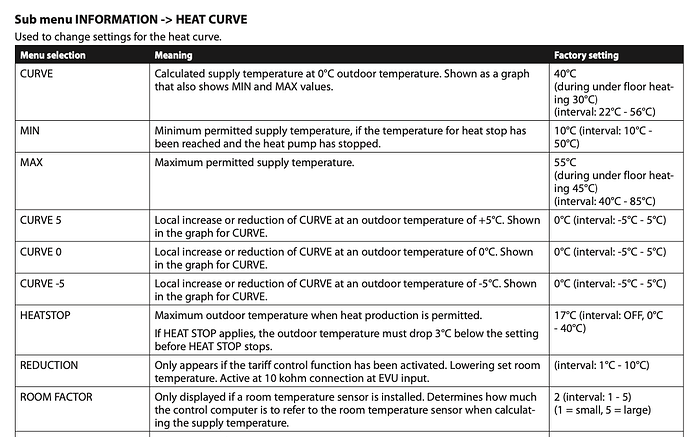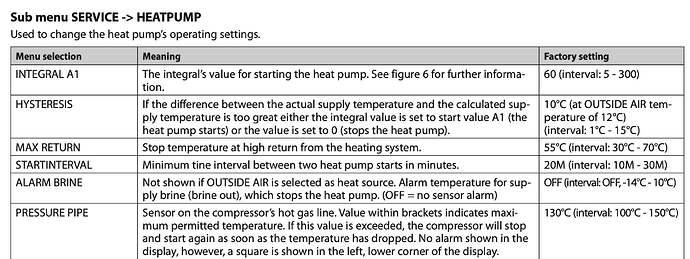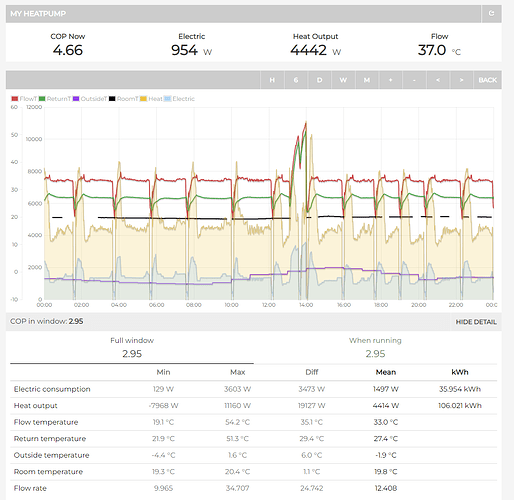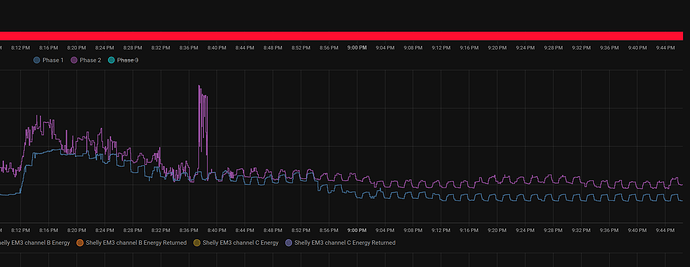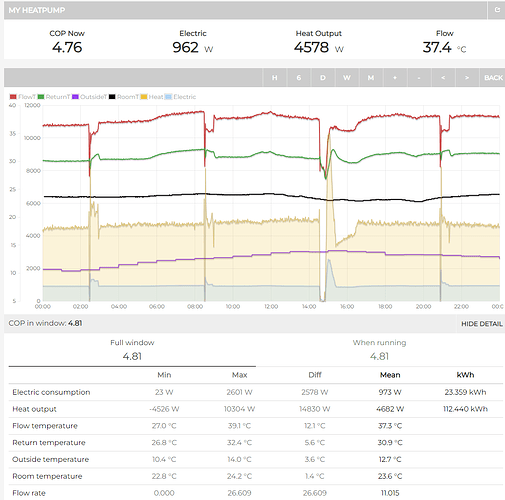I would believe the physics…everybody else must show their calculations… 
Here is a spreadsheet for a friend:
Heat Pump Calcs.xlsx (2.1 MB)
In the “Heat pump” worksheet you can see the data for the heat pump. It shows the minimum / maximum outputs at various outside temperatures and flowrates.
In the “Emitters” worksheet you can see the radiators installed and how much heat they provide / how much water they contain / what the flowrates should be for a few different “scenarios”
These are:
-
Whole house at -2C (design temperature) with radiators at 45/40
-
Whole house at +12C (about the warmest you would ever have heating on) with radiators at 35/30
-
Part of the house at -2C (design temperature) with radiators at 45/40
-
Part of the house at 12C (about the warmest you would ever have heating on) with radiators at 35/30
The design condition for the house is 9 kW @ 45/40C at -2C outside in the condition it is today. Part of it is undergoing renovation at the moment (the newer part) which is why it is interesting to look at what happens when part of the house is heated.
In reality the radiator temperatures would be much lower when it is 12C…or you would decide to only use them at 35C for part of the the day (when electricity is cheaper etc)
The user can choose that strategy. Maybe the heat pump gets best performance runnign radiators at 25C 24 hours a day. Maybe the heat pump gets better performacne running them for 1 hour on / 1 hour off at 30C. Maybe it gets better performance running them for 1 hour on / 2 hours off at 35C etc. I don’t know and it doesn’t really matter. It is EASY (if the heat pump cas controls) to make it run on/off. What you can’t do is make it run continuously if it won’t turn down far enough.
The “Runtime” worksheet checks to see if the heat pump will cycle.
A “7 kW” Vaillant unit (actually 9 kW at 45/40C and -2C) will turn down to 3.5 kW at +12C and 35/30.
With the radiators sized to give out 9.6 kW at 45/40C; it will never cycle when running at 45/40C and -2C because the radiators can always emit the minium heat; and it will never cycle when running at 35/30C and +12C because the radiators can still emit the heat.
You could run it continuously at minimum output if you wanted to; although you would cook.
If we took the same heat pump and conencted it to only part of the house (simulating part of the house being renovated; or a heat pump that is too big being fitted to a house) then things change. Now we only have radiators for 6 kW@ at 45/40C.
Still it will never cycle when running at 45/40C and -2C because the radiators can always emit the minimum heat; but it will be forced to cycle when running at 35/30C and +12C because the radiators cannot emit the minimum output of the heat pump.
How long does it take to increase the water temperature 1 degC? That depends on how much water there is. With 0.8 kW too much power the 61 litres of water in the radiators (I ahve ignored the heat pump and the pipes and the metal of the radiators here so in pracitce the cycles would be longer) it would take 5 minutes for that temperature to change by 1 degC.
Add 100 litres of system volume and not it takes 15 minutes for the temperature to increase by 1 degC.
The extra volume increases the length of the cycle.
You HAD to do this for old fixed speed units because they HAD to cycle to deliver an output that was smaller than the design heating power. You would use a combination of system volume AND controls to manage the cycling.
You don’t HAVE to do this for inverter units if they are about the right size. (that 7 kW Arotherm in the house above doesn’t need to cycle unless you cut off 30% of the house)
You MAY want to do it if the unit is oversized, has a poor turndown (high minimum output), and/or the heating system has a small volume.
Here’s how that unit is behaving with “part of a house” connected at approx +7-12C air temperature (average winter temperature in the UK / average heating season temperature is +7C)
The onwer chooses to run a “night setback” with it when the weather is mild (cooler temperatures at night/warmer during day) for comfort reasons.
It does briefly run maximum output (not the most efficient way of running) first thing in the mornign but then settles into a steady 3.5 kW just as you would expect from the datasheet.
The second day is a bit warmer and it is forced to cycle towards the end of the day.
The Vaillant controls use degree-minutes. It measures the difference between the target water temperature and the actual water temperature, and how long this has been happening for. By default once “60 degree minutes” have been counted the compressor is started.
Tricky to see from the graph but it stops at 19:55 and restarts at about 20:05; having waited for the water temperature to drop by 5 degC for 10 minutes (this integral would be 50 degree minutes)
The target water temperature is set by the weather-compensation curve (and modified by any load compensation). There is also compressor protection to prevent restart for X minutes after it stops. (no matter what the controls want to do)
I don’t know modern Samsung. I don’t know how the target water temperature is set or when it decides to start and stop the compressor. It’s either dumb as a rock - being a little oversized with small volume doesn’t help - or there’s something that needs configuring here.
The old Samsung units WERE dumb as a rock. They has “water law” to set the target temeprature based ou outdoor temperature. The compressor would start if the water was too cold and stop if it was too hot. You needed to be careful with your wet heating system design to make sure that it wasn’t being asked to start and stop too often.
They didn’t have any “load compensation” either; so that UK distributor’s trick would be to set a minimum water temperature of 35C and add an external hysteresis thermostat. Under part-load conditions the thermostat would switch the heat pump on and off. After the water needed to be hototer than 35C it would run continuously using the “water law” curve instead. (the thermostat would always be askign for heat but it would never quite reach the set temperature)
Here’s a manual for an old fashioned heat pump that explains [outdoor temperature / weather copensation] curves (Samsung call this water law); room influence (I don’t think Samsung units have room influence capability at the same time as water law); integral control (unclear how Samsung control compressor start/stop); and hysteresis (if somebody makes a sudden change to the settings then wipe the integral and start again so that you’re responsive)
I think most heat pumps that originate in central/northern europe use similar control logic to avoid excessive cycling / early restart of compressors:
Installation and Service.pdf (5.5 MB)
And some typical settings:
- 60 degree-minutes to start the compressor
- minimum 20 minutes between compressor starts (even if the degree-minutes want it to start sooner)
- 600 degree-minutes to start the auxiliary heat
e
![]() Those are completely different statements…
Those are completely different statements… ![]()
